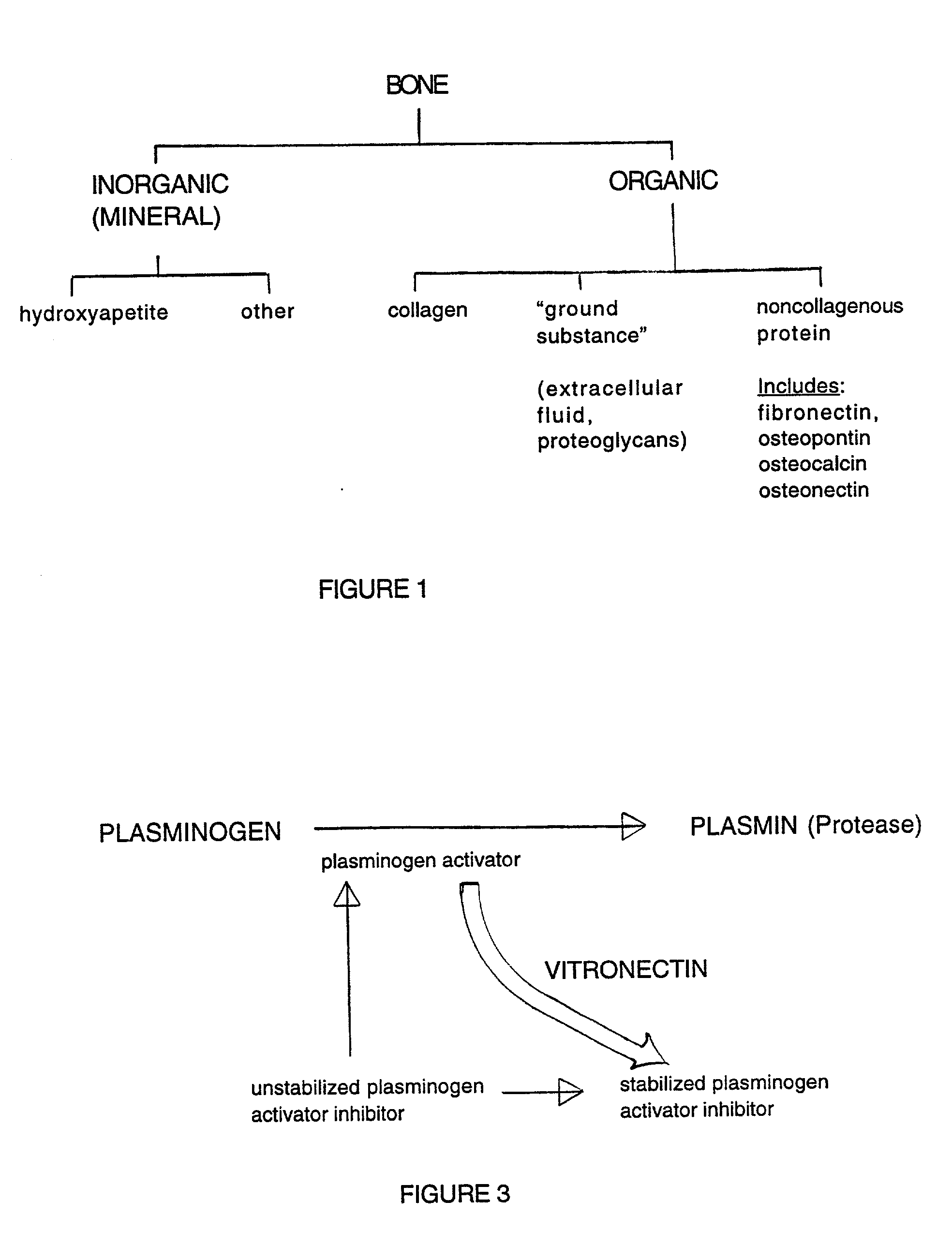Composition and method for bone regeneration
a bone regeneration and composition technology, applied in the direction of prosthesis, pharmaceutical delivery mechanism, peptide/protein ingredients, etc., can solve the problems of abnormal bone development or abnormal skeletal use, complex and often difficult procedures, and the need to repair or reconstruct bone, so as to achieve optimal effect on the bone regeneration process
- Summary
- Abstract
- Description
- Claims
- Application Information
AI Technical Summary
Benefits of technology
Problems solved by technology
Method used
Image
Examples
example 1
[0113] Modification of the Synthetic Resorbable Polymer
[0114] Carboxyl-terminal polyester e.g., poly(L-lactic acid), polyglycolic acid, polylactin, poly(DL-lactic-co-glycolic acid), poly(.epsilon.-caprolactone), poly(L-lactic acid-co-caprolactone), poly(glycolic acid-co-caprolactone) etc. of varying mole-percent compositions of monomers and molecular weights are derivatized at the free carboxyl groups using a modification of the procedure of Williams et al. (1981). In this procedure 1-ethyl-3-[-3-dimethylaminopropyl]-carbodii-mide (EDC) serves as the coupling agent. The EDC-activated carboxyl group of the synthetic resorbable polymer is coupled to the free amine groups associated with a biologically active polypeptide and polypeptide fragments. (Williams, A. and Ibrahim, E. A. "A Mechanism Involving Cyclic Tautomers for the Reaction with Nucleophiles of the Water-Soluble Peptide Coupling Agent 1-Ethyl-3-[-3-Dimethylaminopropyl]-Carbodiimide (EDC)." J. Am. Chem. Soc. 103, 7090-7095(1...
example 2
[0116] Modification of the Biologically Active Peptide
[0117] Using procedures similar to Example 1 set out above, as well as the general approach thereof, the biologically active peptide is modified and connected to the free carboxyl group of the synthetic resorbable polymer.
example 3
[0118] Modification of Both the Synthetic Resorbable Polymer and the Biologically Active Peptide
[0119] Under certain circumstances, it may be advantageous to modify both the synthetic resorbable polymer and the biologically active polypeptide prior to the derivatization step described in Example 1 above. Whether or not the synthetic resorbable polymer and the biologically active polypeptide are modified prior to the derivatization step will usually depend upon the basic properties or structure of the biologically active polypeptide. In any event, when both polymer and active peptide are modified, the approach as set out in Examples 1 and 2 describing such modification would typically be used.
PUM
| Property | Measurement | Unit |
|---|---|---|
| bone resorption | aaaaa | aaaaa |
| homo-bifunctional | aaaaa | aaaaa |
| resorbable | aaaaa | aaaaa |
Abstract
Description
Claims
Application Information
 Login to View More
Login to View More - R&D
- Intellectual Property
- Life Sciences
- Materials
- Tech Scout
- Unparalleled Data Quality
- Higher Quality Content
- 60% Fewer Hallucinations
Browse by: Latest US Patents, China's latest patents, Technical Efficacy Thesaurus, Application Domain, Technology Topic, Popular Technical Reports.
© 2025 PatSnap. All rights reserved.Legal|Privacy policy|Modern Slavery Act Transparency Statement|Sitemap|About US| Contact US: help@patsnap.com


